Solar Lighting 101: Master Spot, Fence & Patio Lights in 3 Min
Solar lighting has transformed outdoor illumination, offering an eco-friendly, cost-effective, and easy-to-install alternative to traditional electric lights. Whether you’re looking to brighten your garden with solar spot lights, enhance your property’s perimeter with solar lights for fence, or create a cozy ambiance with solar lighting for patios, this guide breaks it down in simple terms. In just a few minutes, you’ll understand how solar lights work, their key components, and why they’re a game-changer compared to conventional lighting. Let’s dive in!
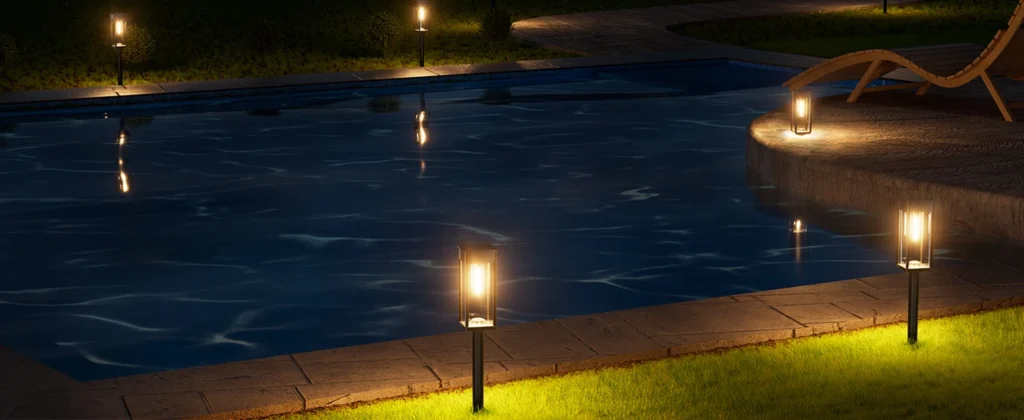
What Are Solar Lights and How Do They Work?
Solar lights are self-contained systems that harness sunlight to power LED bulbs, eliminating the need for electrical wiring or grid power. They’re perfect for illuminating outdoor spaces like gardens, fences, and patios. The magic happens through a simple process: daytime charging, nighttime glowing. Here’s how it works:
- Daytime Charging: Solar panels absorb sunlight and convert it into electricity, which is stored in a rechargeable battery.
- Nighttime Glowing: When darkness falls, a light sensor triggers the LED to draw power from the battery, lighting up your space.
This process is seamless, automatic, and requires zero maintenance in most cases. Whether you’re using solar spot lights to highlight a garden feature, solar lights for fence to mark boundaries, or solar lighting for patios for evening gatherings, the principle remains the same.
Breaking Down the Core Components of Solar Lights
To understand why solar lights are so efficient, let’s unpack their key components. Each part plays a critical role in delivering reliable, sustainable lighting.
1. Solar Panel: The Power Generator
The solar panel is the heart of any solar light. Made of photovoltaic (PV) cells, it captures sunlight and converts it into electricity. For solar spot lights, panels are often compact but highly efficient to focus on specific areas like statues or trees. In solar lights for fence, panels are integrated into the light’s body for a sleek look. For solar lighting for patios, larger panels may be used to power multiple lights or brighter LEDs.
Modern solar panels use monocrystalline or polycrystalline silicon for maximum efficiency, even in low-light conditions like cloudy days. This ensures your lights charge effectively year-round.
2. Battery: The Energy Bank
The battery stores the electricity generated by the solar panel during the day. Most solar lights use rechargeable lithium-ion or nickel-metal hydride (NiMH) batteries. These batteries are designed to hold enough charge to power your lights for 6–12 hours, depending on the model and weather conditions.
For example, solar lights for fence often use smaller batteries for compact designs, while solar lighting for patios may require larger batteries to support extended runtime or brighter output. Proper battery management ensures your lights stay reliable, even after long periods of cloudy weather.
3. LED Lamp: The Light Source
LEDs (Light Emitting Diodes) are the go-to choice for solar lights due to their energy efficiency and long lifespan. Unlike traditional bulbs, LEDs consume minimal power, allowing solar lights to shine brightly without draining the battery quickly. In solar spot lights, LEDs are designed to focus light in a specific direction, perfect for highlighting pathways or garden features. For solar lighting for patios, LEDs often provide soft, ambient light to create a welcoming atmosphere.
4. Controller and Sensor: The Smart Brain
The controller is the brain of the operation, managing the flow of electricity between the panel, battery, and LED. It ensures the battery doesn’t overcharge during the day or over-discharge at night. A built-in light sensor (photocell) detects when it’s dark, automatically turning the lights on and off. This hands-free operation makes solar lights for fence and solar lighting for patios incredibly user-friendly, as they require no manual input.
Solar Lights vs. Traditional Electric Lights: What’s the Difference?
To appreciate the value of solar lighting, let’s compare it to traditional grid-powered lights. The differences boil down to three key advantages: energy savings, easy installation, and environmental benefits.
1. Energy Savings
Traditional electric lights rely on grid power, which can rack up electricity bills, especially for outdoor lighting left on for hours. Solar lights, like solar spot lights and solar lights for fence, use free sunlight, costing $0 to operate. Once installed, they’re a one-time investment with no recurring costs.
2. No Wiring, Easy Installation
Traditional lights require complex wiring, often needing professional installation, especially for outdoor setups. This can be costly and time-consuming. Solar lights, on the other hand, are plug-and-play. Solar lights for fence can be mounted directly onto posts, while solar spot lights are simply staked into the ground. Solar lighting for patios often comes with flexible mounting options, like wall or pole attachments, making setup a breeze.
3. Eco-Friendly Choice
Solar lights are powered by renewable energy, reducing your carbon footprint. Traditional lights, especially those using incandescent bulbs, consume more energy and contribute to greenhouse gas emissions. By choosing solar lighting for patios or solar spot lights, you’re making a sustainable choice that benefits both your wallet and the planet.
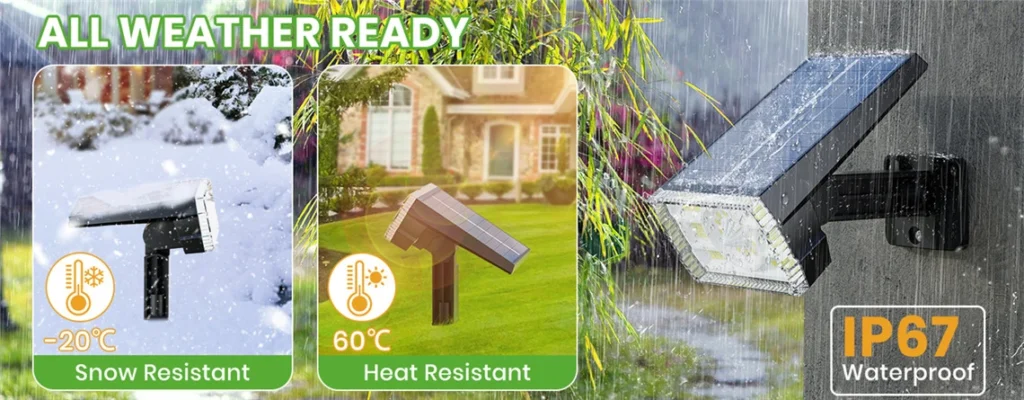
Why Choose Solar Spot Lights for Your Garden?
Solar spot lights are a versatile option for highlighting specific features in your outdoor space. Whether it’s a favorite tree, a water feature, or a pathway, these lights focus a beam of light exactly where you want it. Here’s why they’re a great choice:
- Precision Lighting: Adjustable angles let you direct light precisely, enhancing the beauty of your garden.
- Energy Efficiency: Their focused LEDs use minimal power, maximizing battery life.
- Durability: Most solar spot lights are weather-resistant, designed to withstand rain, snow, and heat.
For example, installing solar spot lights along a garden path not only improves safety by illuminating walkways but also adds a dramatic effect to your landscaping.
Brightening Boundaries with Solar Lights for Fence
Solar lights for fence are a practical and stylish way to define your property’s perimeter. These lights are typically mounted directly onto fence posts, blending seamlessly with your outdoor aesthetic. Key benefits include:
- Enhanced Security: Illuminating your fence line deters intruders and improves visibility at night.
- Aesthetic Appeal: Solar lights for fence come in various designs, from modern to rustic, complementing any style.
- Low Maintenance: With no wires or external power source, they’re easy to install and maintain.
Imagine a row of solar lights for fence casting a warm glow along your backyard, creating a safe and inviting atmosphere for evening gatherings.
Creating Ambiance with Solar Lighting for Patios
Solar lighting for patios is all about transforming your outdoor living space into a cozy, functional area for relaxation or entertaining. These lights come in various forms, from string lights to wall-mounted lanterns. Here’s why they’re ideal for patios:
- Versatile Designs: Choose from hanging lights, table lamps, or post lights to suit your patio’s vibe.
- Long-Lasting Illumination: Larger batteries and efficient LEDs ensure your patio stays lit for hours.
- Weather Resistance: High-quality solar lighting for patios is built to endure outdoor conditions, ensuring year-round performance.
Picture hosting a summer barbecue with solar lighting for patios creating a warm, inviting glow, all without worrying about wiring or electricity costs.
Tips for Choosing and Maintaining Solar Lights
To get the most out of your solar spot lights, solar lights for fence, or solar lighting for patios, follow these tips:
- Placement Matters: Position solar panels in areas with direct sunlight for optimal charging. Avoid shaded spots under trees or overhangs.
- Clean Regularly: Dust and debris on solar panels can reduce efficiency. Wipe them down with a damp cloth every few months.
- Check Battery Health: Batteries typically last 1–2 years. Replace them if your lights dim or don’t stay on as long.
- Choose Quality: Opt for lights with durable materials like stainless steel or weather-resistant plastic for longevity.
Innovations in Solar Lighting: What’s New?
Recent advancements have made solar lights even more appealing. Some exciting trends include:
- Smart Controls: Some solar spot lights and solar lighting for patios now come with remote controls or smartphone apps, letting you adjust brightness or set timers.
- Motion Sensors: Many solar lights for fence include motion detectors, enhancing security by activating only when needed.
- Improved Efficiency: Newer solar panels charge faster and store more energy, even in low-light conditions, making them reliable in all climates.
These innovations make solar lights more versatile and user-friendly than ever, catering to a wide range of outdoor needs.
Conclusion: Why Solar Lighting Is the Future
Solar lighting, whether it’s solar spot lights, solar lights for fence, or solar lighting for patios, offers a perfect blend of functionality, aesthetics, and sustainability. By harnessing the sun’s free energy, these lights save you money, simplify installation, and reduce environmental impact. Their core components—solar panels, batteries, LEDs, and controllers—work together seamlessly to provide reliable illumination without the hassle of traditional wiring.
Whether you’re a homeowner looking to enhance your garden, secure your fence line, or create a welcoming patio, solar lights are an accessible solution. With easy setup, minimal maintenance, and cutting-edge innovations, they’re not just a trend—they’re the future of outdoor lighting. Start exploring solar lighting today and transform your outdoor space with ease!

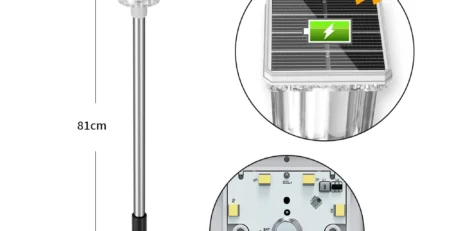
-6-1-450x231.webp)

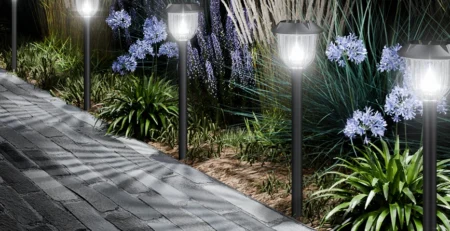
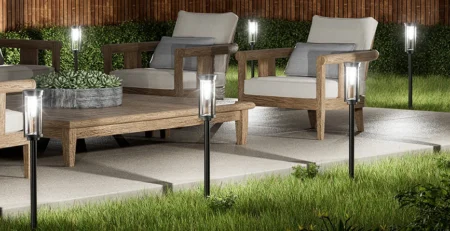
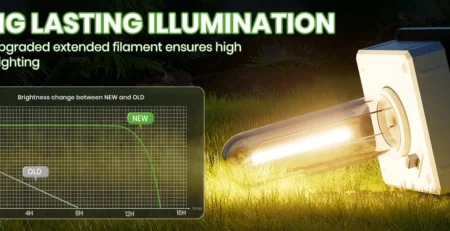

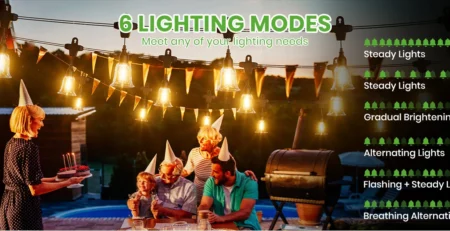
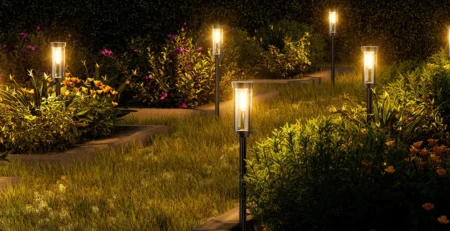
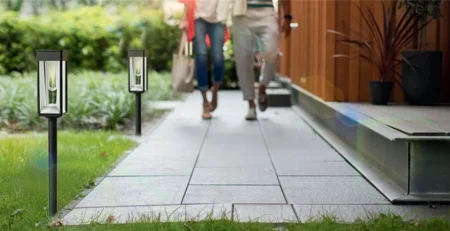
Leave a Reply